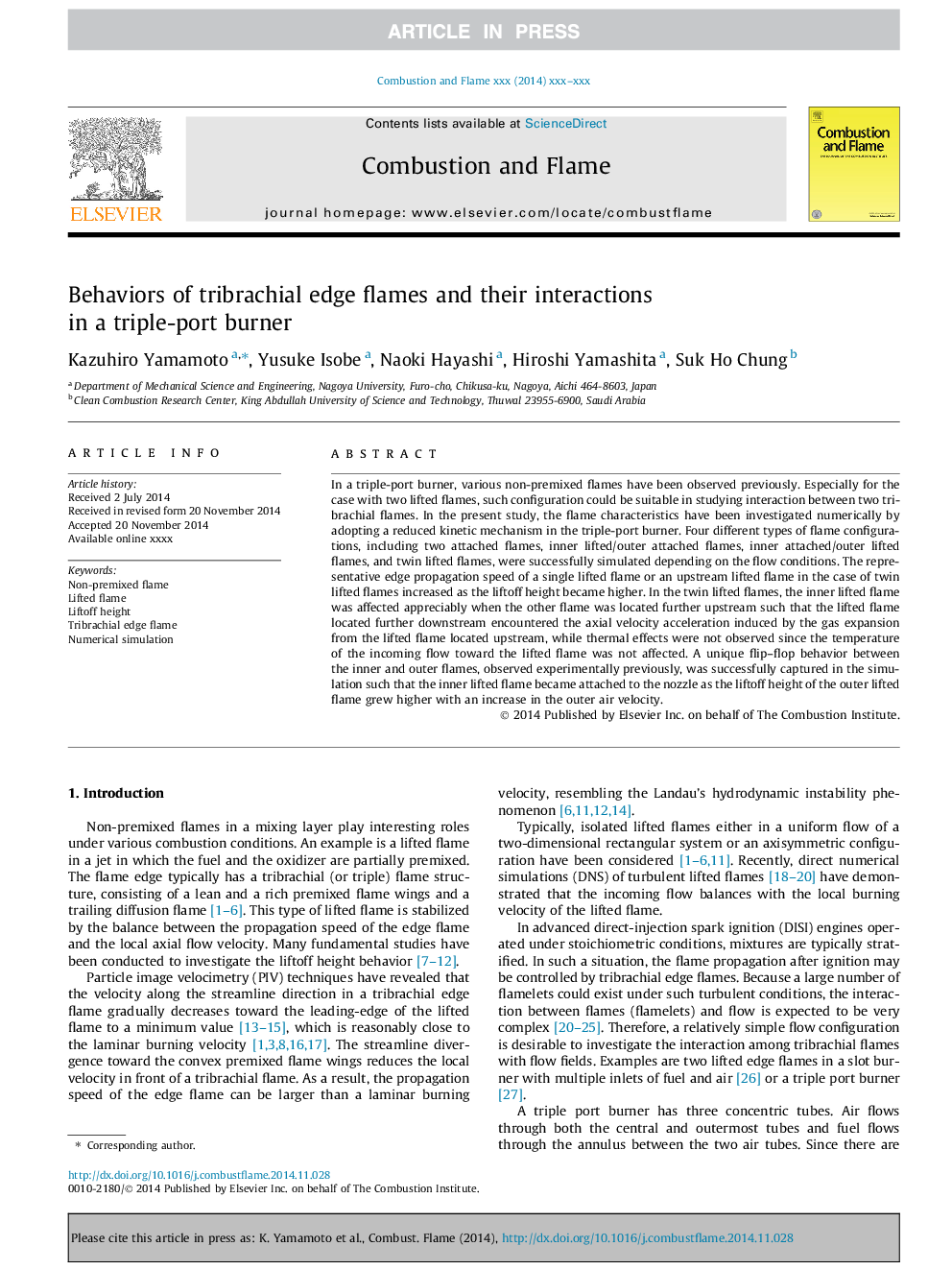| Article ID | Journal | Published Year | Pages | File Type |
|---|---|---|---|---|
| 10264273 | Combustion and Flame | 2015 | 7 Pages |
Abstract
In a triple-port burner, various non-premixed flames have been observed previously. Especially for the case with two lifted flames, such configuration could be suitable in studying interaction between two tribrachial flames. In the present study, the flame characteristics have been investigated numerically by adopting a reduced kinetic mechanism in the triple-port burner. Four different types of flame configurations, including two attached flames, inner lifted/outer attached flames, inner attached/outer lifted flames, and twin lifted flames, were successfully simulated depending on the flow conditions. The representative edge propagation speed of a single lifted flame or an upstream lifted flame in the case of twin lifted flames increased as the liftoff height became higher. In the twin lifted flames, the inner lifted flame was affected appreciably when the other flame was located further upstream such that the lifted flame located further downstream encountered the axial velocity acceleration induced by the gas expansion from the lifted flame located upstream, while thermal effects were not observed since the temperature of the incoming flow toward the lifted flame was not affected. A unique flip-flop behavior between the inner and outer flames, observed experimentally previously, was successfully captured in the simulation such that the inner lifted flame became attached to the nozzle as the liftoff height of the outer lifted flame grew higher with an increase in the outer air velocity.
Related Topics
Physical Sciences and Engineering
Chemical Engineering
Chemical Engineering (General)
Authors
Kazuhiro Yamamoto, Yusuke Isobe, Naoki Hayashi, Hiroshi Yamashita, Suk Ho Chung,
